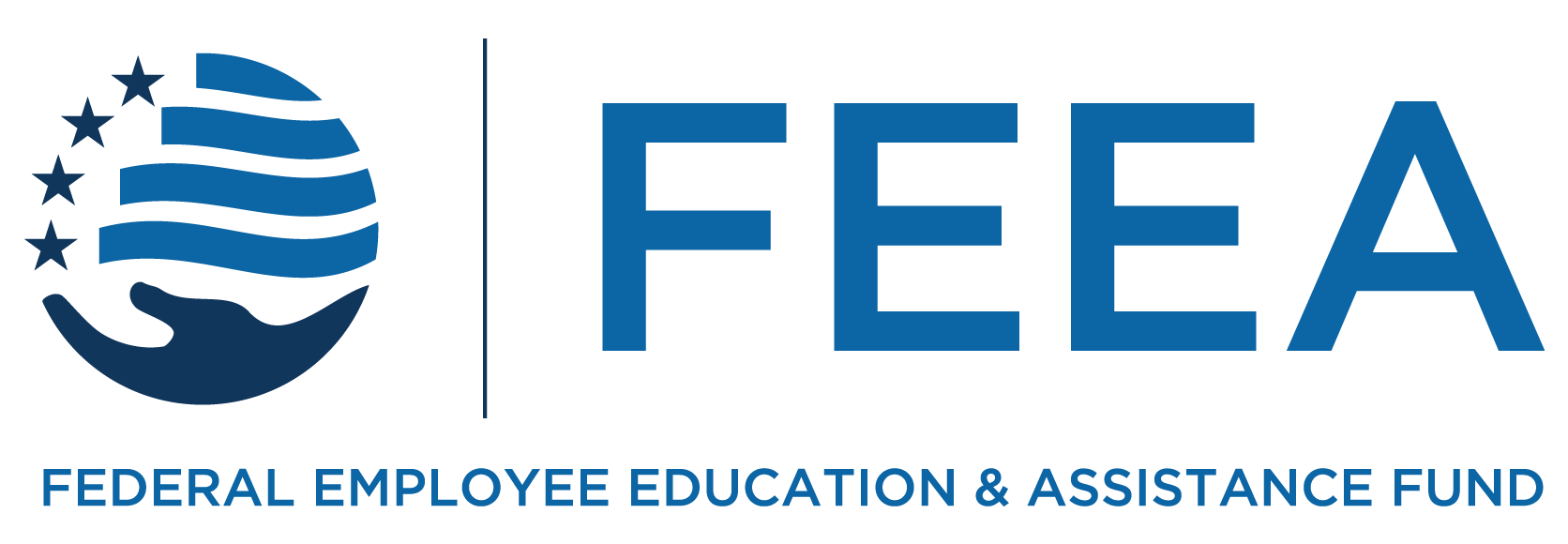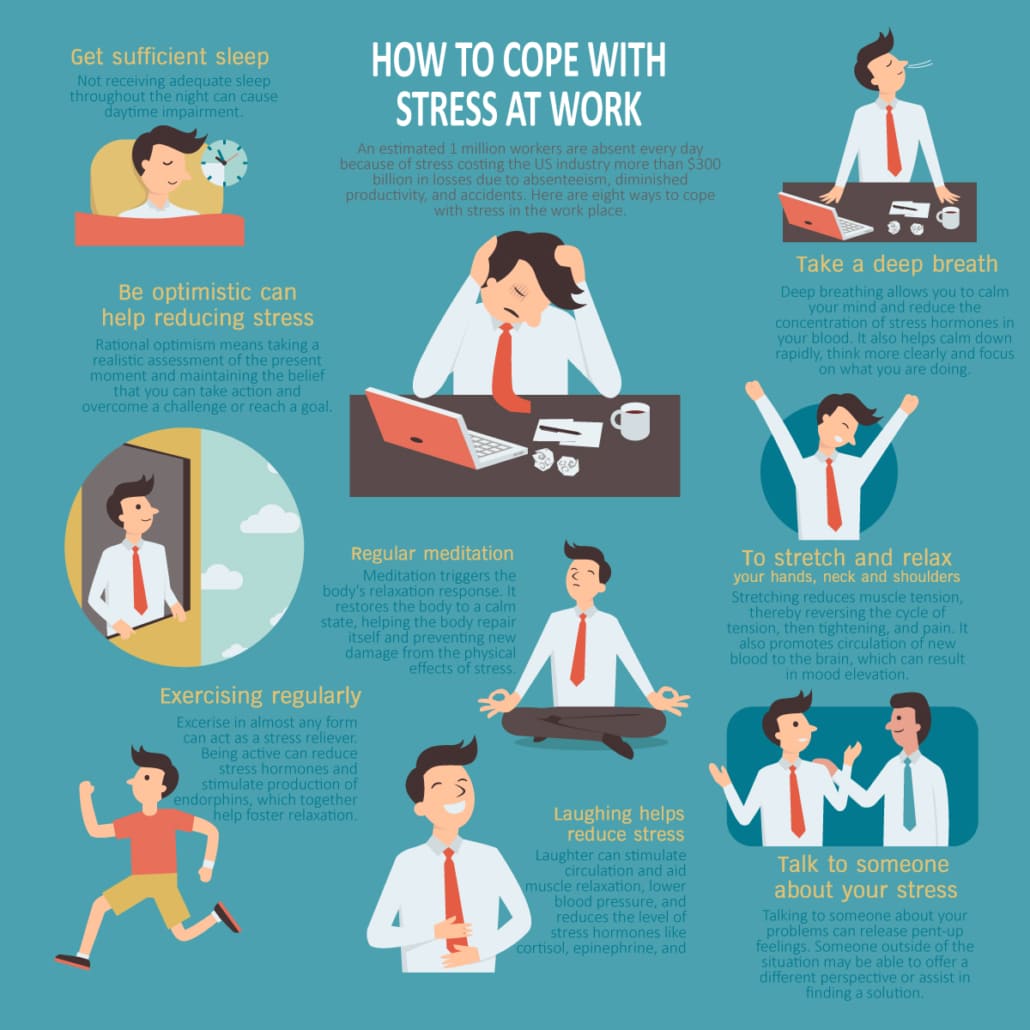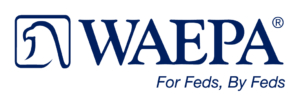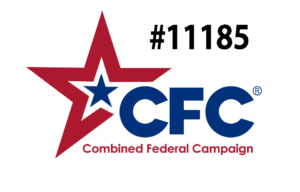THIS #FEDLIFEHACK GENEROUSLY SPONSORED BY WAEPA
Navigate Challenges, Manage Stress, and Thrive in the Federal Workplace
The modern workplace can be a breeding ground for stress and anxiety. Tight deadlines, demanding workloads, interpersonal conflicts, and the ever-present pressure to perform can take a toll on even the most resilient individuals.
For federal employees, these challenges can be compounded by the unique demands of public service and the added complexity of navigating government regulations and procedures.
When the demands of your job exceed your resources or capabilities, it can trigger a cascade of physical and emotional responses. This mismatch between expectations and reality is a common source of workplace anxiety, leaving you feeling overwhelmed and stressed.
This is a concern shared by many. According to the U.S. Office of Personnel Management (OPM), nearly one-quarter of the U.S. workforce experiences a mental health or substance use problem each year.
To understand the impact of stress and anxiety, we spoke with Dr. Monica Jackman, an Occupational Therapist, who explained, “When stress occurs, our bodies and minds respond to make the needed change and rebalance our systems,” said Dr. Jackman. “But, when stress becomes chronic, we can experience strain, which is the impact on our system.”
Fortunately, there are ways to manage and mitigate the effects of chronic stress and anxiety. This #FedLifeHacks post provides practical strategies to help you manage anxiety triggers, navigate difficult conversations, and foster a more positive and supportive work environment.
While these strategies can be helpful, please be aware that they are not a replacement for seeking professional help and support from mental health professionals when needed.
Understanding Workplace Anxiety
Anxiety manifests in different ways for different people. Some common signs of workplace anxiety include:
- Physical symptoms: Racing heart, sweating, muscle tension, fatigue, sleep disturbances.
- Emotional symptoms: Feeling overwhelmed, irritable, restless, on edge, having difficulty concentrating.
- Behavioral changes: Avoiding certain tasks or situations, withdrawing from colleagues, procrastination.
OPM notes that individuals with deteriorating mental health may exhibit changes in their work performance, such as difficulty making decisions, repeatedly missing deadlines, increased absenteeism, and reduced quality of work.
Remember, anxiety is a natural response to stress, and it’s important to acknowledge that. If you experience some of these symptoms, you’re not alone. Many people face similar challenges, and seeking support is a sign of self-awareness and strength. However, when anxiety becomes persistent and interferes with your ability to function effectively at work, it’s time to act and seek support.
Identify Your Triggers
The first step to managing workplace anxiety is to identify your triggers. What specific situations, tasks, or interactions tend to evoke feelings of anxiety? Common triggers include:
- Fear of public speaking or presentations
- Difficult conversations with colleagues or supervisors
- Performance reviews
- Heavy workloads and tight deadlines
- Conflict within the team
- Uncertainty about the future or organizational changes
Once you’re aware of your triggers, you can develop strategies to proactively address them.
Practical Strategies for Managing Workplace Anxiety
Here are some proven techniques to help you cope with anxiety and create a more positive work experience:
- Practice Mindfulness: Take a few minutes each day to focus on your breath and observe your thoughts and feelings without judgment. Mindfulness techniques can help you stay grounded in the present moment and reduce the tendency to ruminate on worries.
- Challenge Negative Thoughts: Anxiety often stems from negative thought patterns. When you notice yourself engaging in catastrophic thinking or self-criticism, challenge those thoughts. Ask yourself if they are realistic and if there’s another way to view the situation. For example, if you catch yourself thinking, ‘I’m going to fail this presentation,’ challenge that thought by reminding yourself of past successes and focusing on your preparation.
- Prioritize Self-Care: Make sure you’re getting enough sleep, eating nutritious foods, and engaging in regular physical activity. These basic self-care practices can significantly impact your mood and resilience.
- Set Realistic Expectations: Don’t strive for perfection. Focus on doing your best and acknowledge your accomplishments. Remember to set boundaries and avoid overcommitting to tasks or projects, as this can lead to increased stress and anxiety.
- Manage Your Workload: A mountain of tasks can fuel anxiety. Break down large projects into smaller, more manageable chunks by creating a timeline with realistic deadlines for each step. Don’t forget to celebrate each milestone you achieve, building momentum and reducing overwhelm. This approach provides a sense of control and makes your workload feel less overwhelming.
- Improve Communication Skills: Strong communication skills can help you navigate challenging conversations with confidence. Practice active listening, assertiveness techniques, and conflict resolution strategies. When expressing your needs and feelings, try using “I” statements to communicate clearly and assertively without placing blame.
- Build a Support Network: Connect with supportive colleagues, friends, or family members who can provide encouragement and understanding.
- Seek Professional Help: If anxiety is significantly affecting your work or personal life, don’t hesitate to seek professional help from a therapist or counselor. There’s no shame in asking for support and taking care of your mental health is just as important as taking care of your physical health.
Cultivating a Culture of Civility
Creating a positive and supportive work environment can go a long way in reducing workplace anxiety. Here are some ways to foster a culture of civility:
- Promote Respectful Communication: Encourage open and honest communication while emphasizing the importance of respect and empathy.
- Address Conflict Constructively: Develop a clear process for addressing conflict in a fair and timely manner.
- Foster Teamwork and Collaboration: Encourage collaboration and mutual support among colleagues.
- Recognize and Appreciate Efforts: Acknowledge and celebrate individual and team accomplishments.
A memorandum from Heads of Executive Departments and Agencies emphasizes that mental health is crucial in the workplace, enabling employees to reach their full potential and handle challenges effectively. It highlights that timely access to mental health services and support can aid in recovery and prevent crises.
Additionally, your agency’s Employee Assistance Program (EAP) is a valuable resource for confidential support and referrals. As OPM highlights, EAPs can provide assistance in managing stress and accessing mental health services.
Remember Your Value
Achieving a truly anxiety-free workplace might seem impossible, but it’s within your reach with the right strategies and support. By understanding your triggers, incorporating mindfulness, prioritizing self-care, and cultivating a culture of civility, you can create a more positive and fulfilling work experience.
And never forget the value you bring to your agency and the positive impact you have on the lives of others. Focus on your strengths and contributions, and don’t let anxiety overshadow your dedication and commitment to public service.
For more information and resources:
Visit OPM’s Page on Mental Health & Wellness
OPM Memorandum: Federal Workplace Conversations about Mental Health
OPM Employee Fact Sheet (PDF)
Developing a Stigma Reduction Initiative (PDF)
Call the Substance Abuse and Mental Health Services Administration at 877-SAMHSA-7 (877-726-4727).
If you are in crisis, call or text the 988 Suicide and Crisis Lifeline at 988
If you’re struggling with workplace stress or anxiety, don’t hesitate to reach out to your EAP or the resources listed above. Taking the first step towards prioritizing your well-being is a sign of strength.
The information provided in this piece is for your convenience and informational purposes only and not to be construed as professional advice. FEEA and its coauthors and sponsors are not liable for any losses or damages related to actions or failure to act with regard to the content in this piece.
Would you like to reprint this piece in your agency human resource, federal employee association, or union local newsletter? You can do so at no cost by contacting communications@feea.org with your request.















